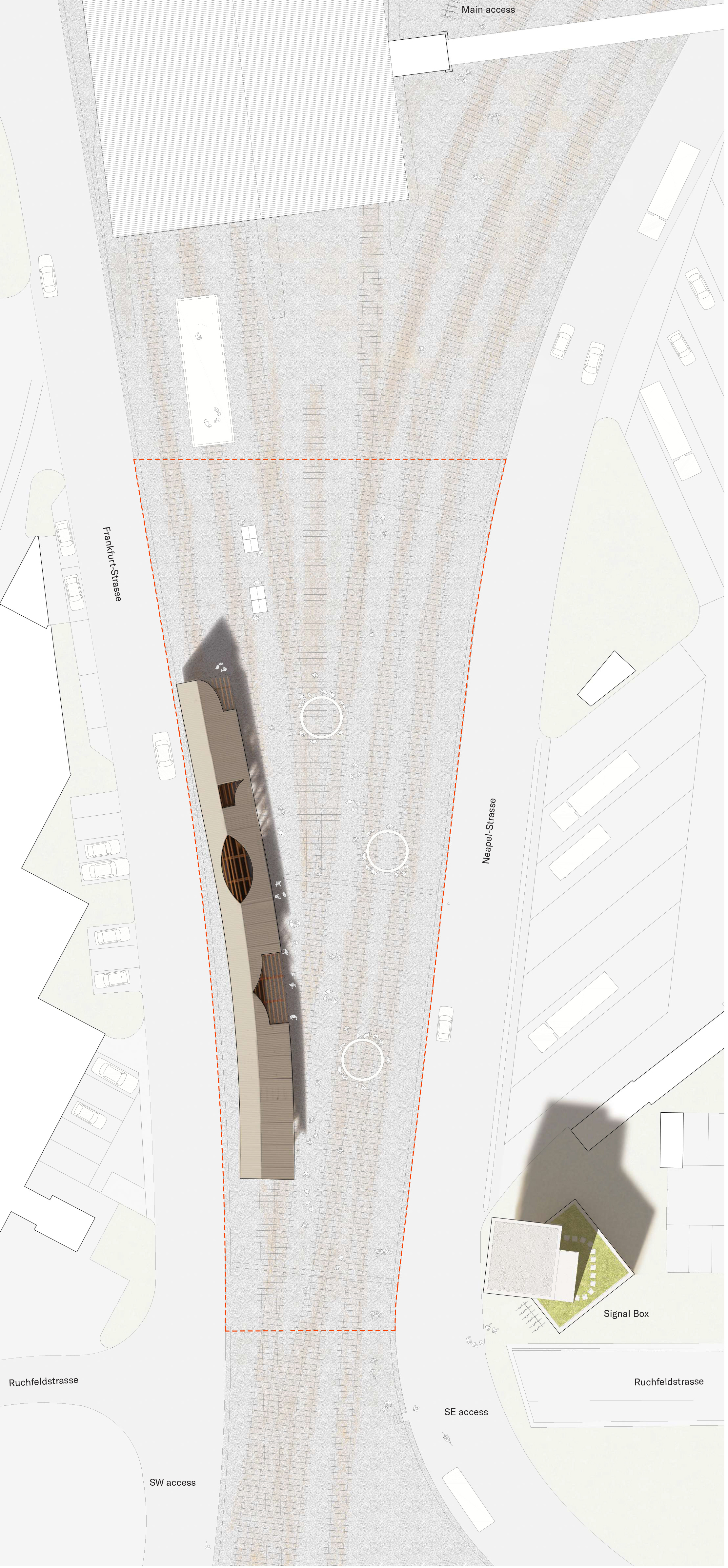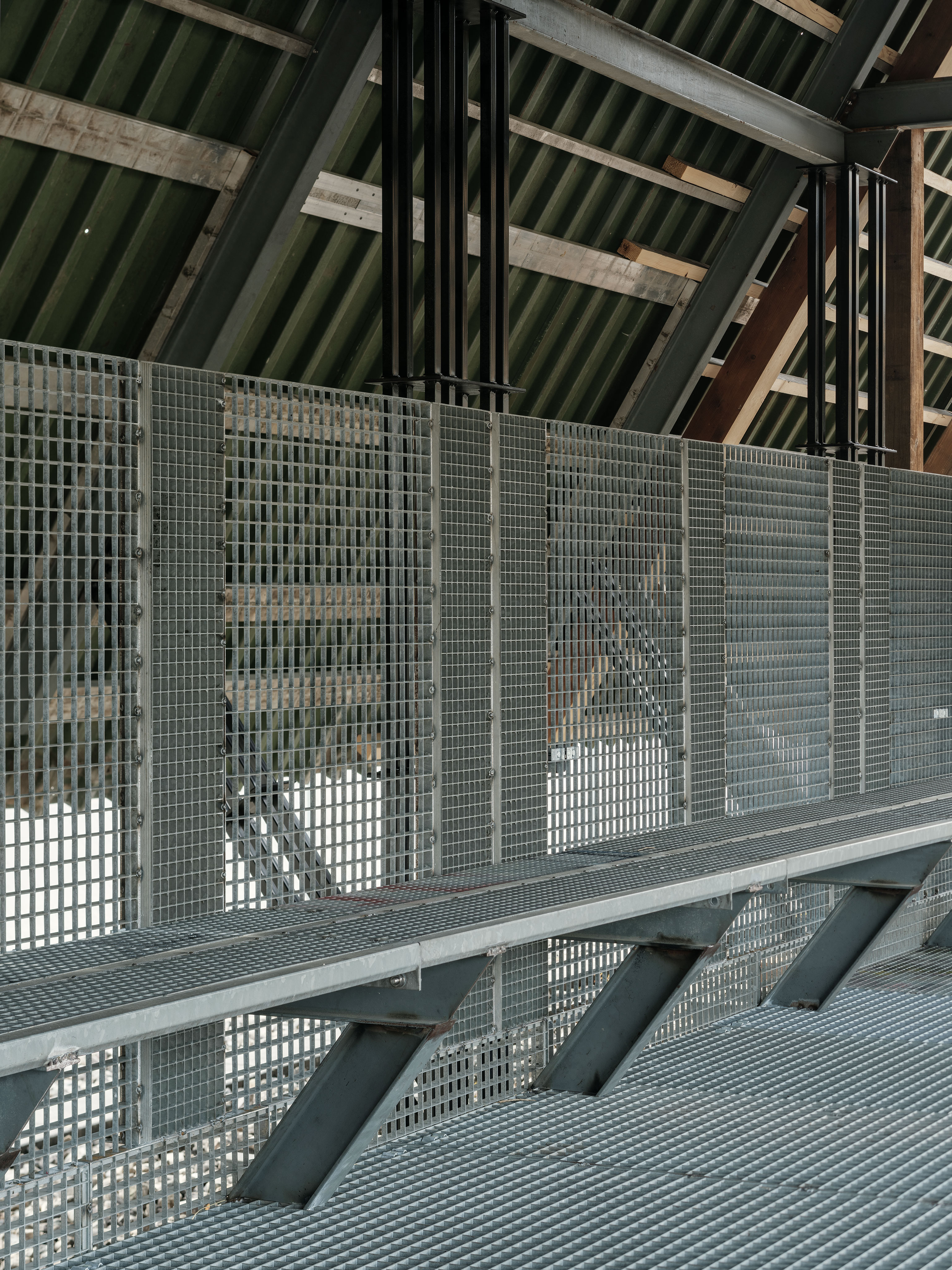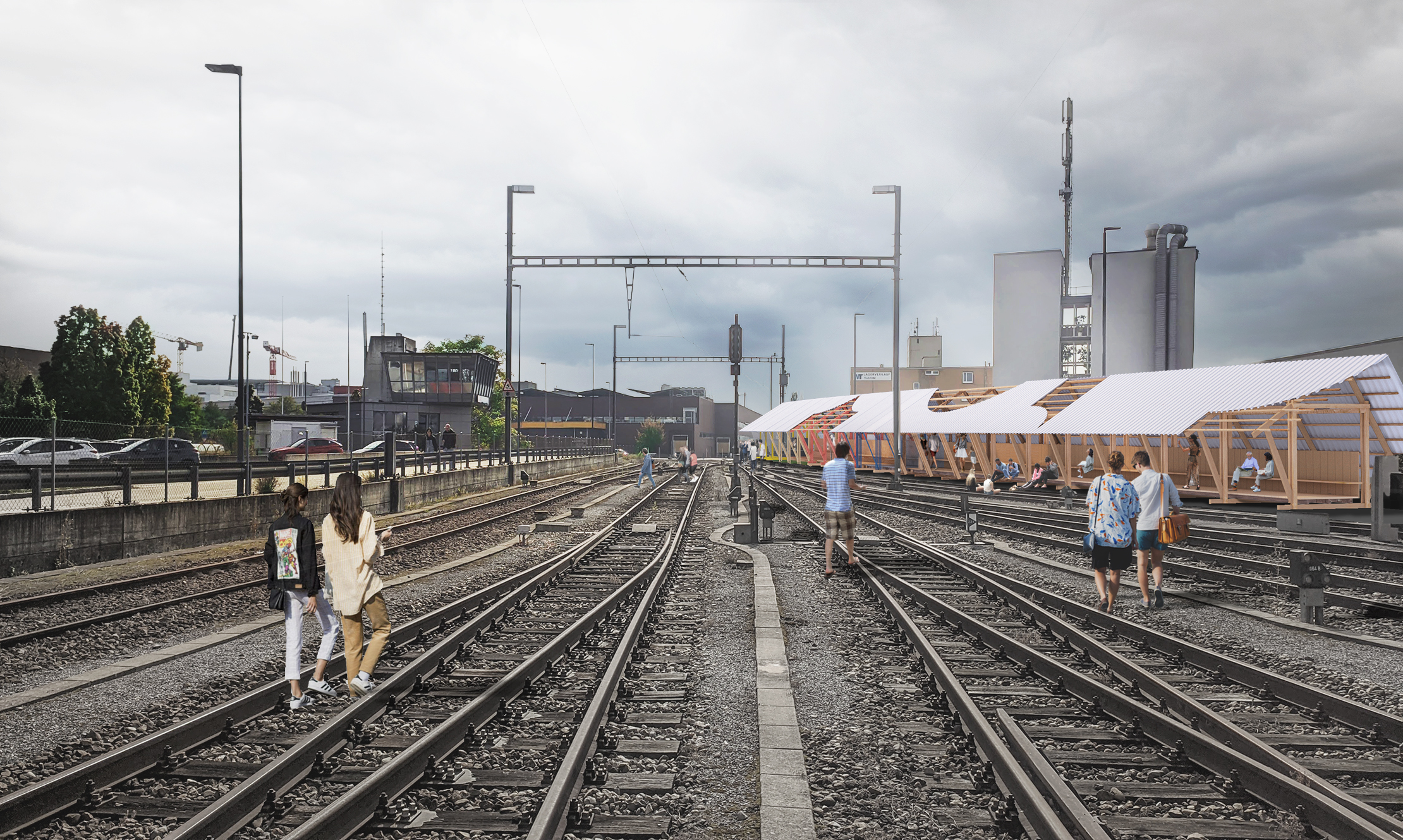Pavilion for the Architekturwoche Basel 2022
A project of: Architecturwoche Basel 2022
Location: Frankfurt-Strasse 54, Basel, Switzerland
Competition year: December 2021 - 1st Prize
Completion date: May 2022
Design: isla (Marta Colón de Carvajal, Juan Palencia)
In collaboration with: Husner AG, Zirkular, Architektur Basel
Supported by: Christoph Merian Stiftung
Team: María Gutiérrez, Cristina Gutiérrez, Annachiara Trabacchin, Chiara Liebermann
Structure consultant: Mecanismo SL
Circular economy consultant: Cristina Fernández
Material innovation consultant: Buj Studio
Photos: Luis Díaz Díaz
Status: Open until January 2023
Other links
︎︎︎Architekturwoche Basel 2022
︎︎︎Component catalogue organised by Zirkular
︎︎︎Jury report
︎︎︎Selected for Internalities, Spanish Pavilion at the Biennale Arquitettura Venezia 2025

Basel Pavillon on site
For the inaugural edition of the Architekturwoche Basel, the Mallorca-based architecture studio isla-winner of the competition for the Basel Pavilion- proposes Loggia Baseliana, an urban passageway and veranda that opens up to the former industrial district of Dreispitz, in the south of Basel, Switzerland. Envisaged as an open, democratic structure that invites passage or permanence, the pavilion simultaneously serves as a shelter, a stage, an exhibition space, and a materialization of circular economic practices, which connects the past, present and future of the Dreispitz area.

Aerial view of the pavillon
The linear public space of the pavilion has a direct relationship with the imaginary of the city of Basel on the east bank of the Rhein, where all the inhabitants and social strata of the city intermingle during the spring and summer months. Similarly, the linear pavilion as an urban space relates to the iconic Swiss structure of the Kapelbrücke in Lucerne, which connects both banks of the city across the Reuss River.

Rhein East bank, Basel

Kapelbrücke, Luzern

Plan 1:200

Plan 1:75

Roof detail back

Roof ridge detail

Interior view of the pavillon
The pavilion is a pioneering project of circular architecture as all its components and materials have been reclaimed from the Basel region, and organized in a catalog for the competition. The pavilion is composed of porticoed modules, combined into 5 different units extending over fifty linear meters. Each unit has its own constructive system and material character with a mix of components and internal solutions, combined with formal clarity and homogeneity under the shape of a vernacular pitched roof.






The roof becomes an important element of the structure, generously cut at preset intervals to create openings for natural light, while simultaneously generating an iconic silhouette for the structure. Inside, a continuous 50-metre-long bench follows the curve of the pavilion’s structure and allows a panoramic view of the spaces ahead, and the industrial context of Dreispitz in the background.

Roof composition diagram
Conceived as a contemplative structure, the pavilion invites visitors to sit and watch by hosting events in the spaces around it, acting as an invitation to Basel’s many programmers and cultural agents. Combining both a program of events and inviting spontaneous use, the pavilion creates a framework for conviviality, encouraging nearby residents, students and passersby to stop by and integrate the pavilion into their daily lives. This sort of urban device transcends the concept of a pavilion related to a specific cultural event becoming part of life in the city of Basel.

Bench Unit 1

Bench Unit 4
The connections and contemplation determined by the pavilion are a fundamental part of the urban environment, which can be traced back to iconic examples such as Florence’s Vasari Corridor. These corridors allow to unveil and contemplate the city in a progressive way. The Loggia Baseliana opens up to the formerly industrial area of Dreispitz, a space that—like the pavilion itself—is a space of potential and possibilities. The pavilion openned its doors to the public in May 2022, and will stay open to the public until October 2022.

Support on the train tracks, detail

Back cross bracing, detail

Connection between units
The pavilion opened its doors to the public in May 2022, on the occasion of the first ever Basel Architeckturwoche, and it will be open until October 2022.

Aerial view (Competition entry)

Interior view (Competition entry)

Exterior view Competition entry)

Working model 1:20

Working model 1:20 (Salva Fonollá)

Structure view - Model 1:20 (Salva Fonollá)